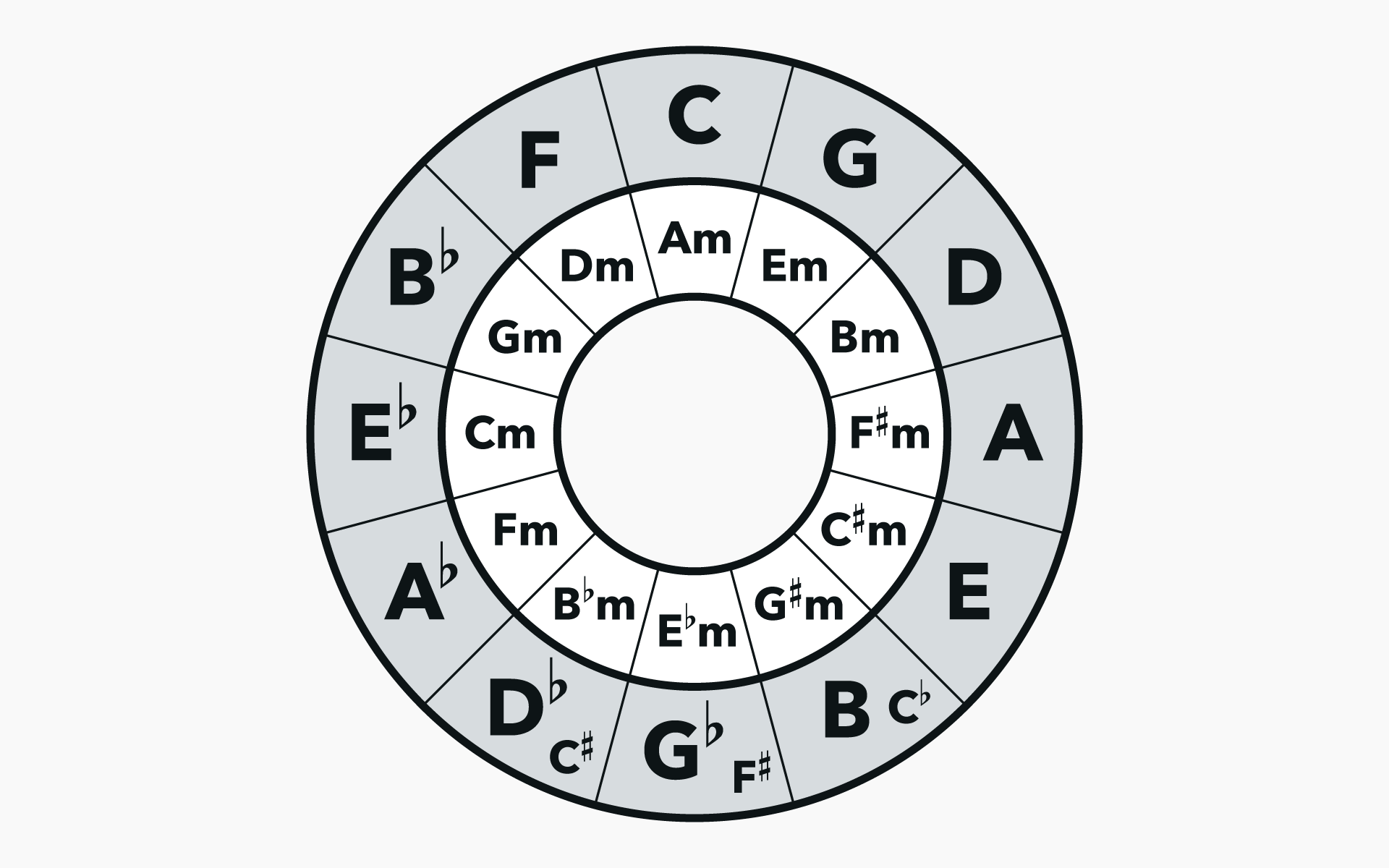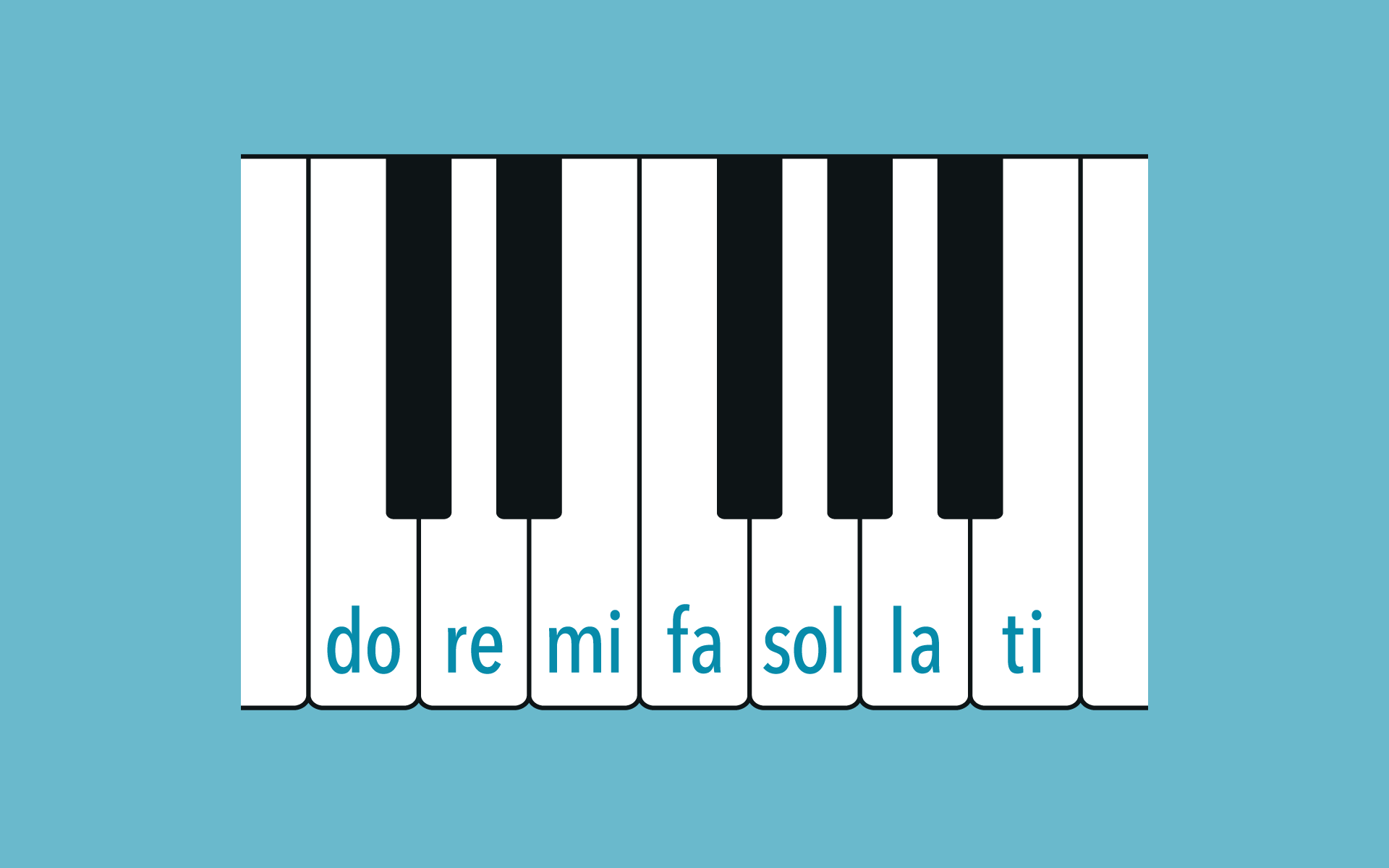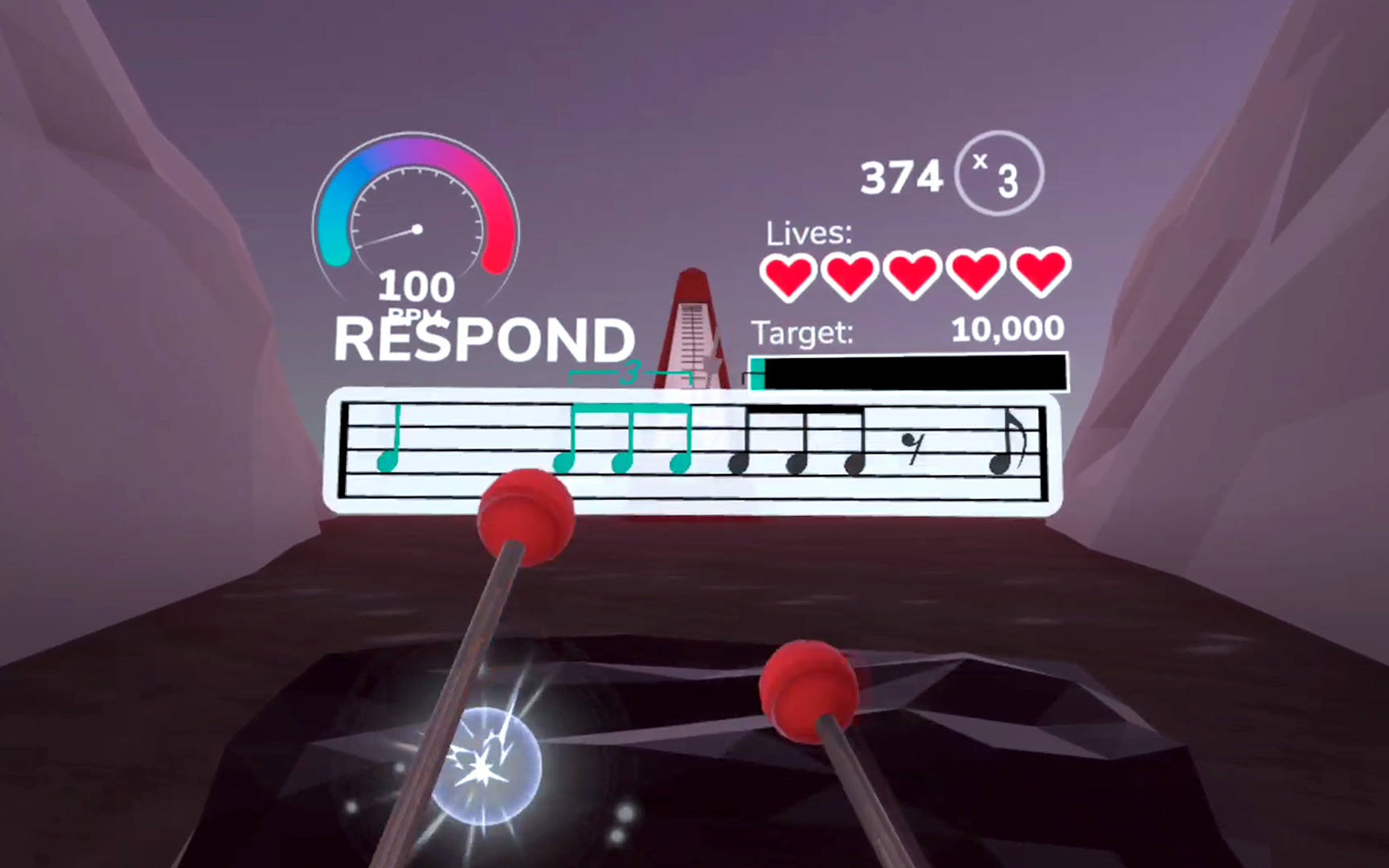The following information on the Sol–Fa method is excerpted from the Berklee Online course Ear Training Fundamentals, written by Roberta Radley, and currently enrolling.
Imagine being able to hear a melody and instantly identify its notes in the same way that you recognize words in a familiar language. This skill isn’t just for musical prodigies; it’s achievable through the Sol–Fa method, a time-tested approach to ear training. By delving into the world of Do Re Mi, let’s explore how the Sol–Fa method can transform your musical perception, making melodies as intuitive as everyday speech.
When it comes to communicating music, this demonstration by Bobby McFerrin is a delightful and insightful example of how music can speak for itself. Onstage at the World Science Festival in 2010, he literally steps through the scale as the audience responds.
Note: The pentatonic scale is a five-note scale consisting of Do, Re, Mi, Sol, and La. There are no half steps in this scale; there is no Fa or Ti. As musicians, we know about these solfège syllable names for the pitches; notice the audience of music lovers shown in this video do not!
From the Bobby McFerrin demonstration, you can see how easily the crowd picks up on what he’s trying to convey. That’s because music is a language and it’s very similar to how we learned our first spoken language as children, or, as adults, how we learn a new second language.
There are four basic skills involved in spoken language.
- We learn to listen (and slowly comprehend the meaning of what we’re listening to).
- We begin to speak (by imitating what we hear). It’s an aural and oral experience at the beginning stages of learning a language.
- We learn to read.
- Finally, we learn to write—a more literate approach.
Looking at these four skills, you should be able to see how learning the language of music is much the same process. We’ll explore these four language skills in greater detail using the Sol-Fa method as an example.
We focus on the Sol-Fa method for analyzing and translating melodic pitches into solfège when listening to music. Using the solfège syllables equates to learning our “ABCs.” While we’re not yet reading standard music notation (that comes in a later lesson of the Ear Training Fundamentals course), the Sol–Fa method brings us one step closer.
Singing will continue to be our primary means of expressing our translations of pitches into solfège syllables. The only “notation” will be a sketch of the Sol-Fa syllables. We’ll use singing to describe what we hear.
For this exercise, we’ll stick to stepwise melodies, exploring well-known songs, popular contemporary pieces, and even your own creations to help identify and analyze major key melodies using the Sol–Fa method.
Using the Sol-Fa Method as a Translator when Listening to Music
The Sol-Fa method starts with singing, not for reading and performing, but to translate and analyze the pitches we hear when listening to a piece of music in a major key. This approach is highly effective for developing listening skills!
Instead of notating, we’ll describe and demonstrate what we hear by singing, as it’s one of the best ways to express our inner hearing out loud. Singing makes a direct connection between the notes’ sound and their names. Remember, singing is not proving that we can sing, it’s proving that we can hear.
Consider the iconic “Do, Re, Mi” song from The Sound of Music and translate it into solfège syllables, using the Sol-Fa notation method. Listen as I sing the melody with solfège syllables.
Doe a deer, a female deer = Do Re Mi/ Do Mi Do Mi
Ray, a drop of golden sun = Re Mi Fa Fa Mi Re Fa
Me, a name I call myself = Mi Fa Sol/ Mi Sol Mi Sol
This might be a completely new experience for many of you as we begin to translate melodies into solfège syllables! As you determine the melody’s solfège syllables, write them down. That will help you remember them. Then you can read back the syllables as you reveal the solfège translation through singing.
Remember, the Sol–Fa method is solely focused on identifying and expressing the role each pitch plays within the major scale using solfège syllables.
Turning Melodies into Solfège
Turning melodies into solfège helps musicians develop aural skills, tonal awareness, and musical memory by reinforcing the functional roles of pitches within a key. By internalizing pitch relationships through solfège, you’ll improve your ability to hear, transcribe, and perform music with greater accuracy and confidence.
We start simply by determining the pitches of melodies we already know, where we already have a general idea about their rhythmic phrasing.
I recommend you start with easy songs that mainly feature stepwise motion.
So what’s the first step in determining the pitches with solfège?
That’s exactly right—we first need to establish Do, the note that sounds like “home.”
And where do we look for Do?
Again, you’re correct—at the end of the melody, where the melody seems to resolve to the “home” note Do.
Let’s start with “Twinkle, Twinkle Little Star.” Start by listening to the final note of the melody. Then sing the pitch that sounds like Do. (Yes, it’s the very last note, on the word “are.”)
Now that you’ve established Do, the next question to ask is: Is the first note of the melody also Do? Go back and listen to the melody again. Sing Do, then sing the first note of the melody and determine if they are the same pitch. (In this song, yes, the first note is also Do, on “Twinkle.”)
Let’s begin the process of working through the song, note by note, solfège syllable by solfège syllable.
While the opening two notes represent an interval leap from Do up to Sol, from there, it’s mostly stepwise motion.
Listen to me as I slowly sing through “Twinkle, Twinkle Little Star,” one solfège syllable at a time. I’ve notated a simple sketch of the melodic pitches, no rhythm, using the Sol-Fa method.
Do Do Sol Sol La La Sol / Fa Fa Mi Mi Re Re Do
Now you try it. Read the Sol-Fa syllables as you sing the melody. Remember, singing is believing and a great way to confirm out loud what your inner hearing is hearing.
Try singing a familiar song with solfège syllables. It’s very likely your inner hearing memory of it will guide you through the pitches, so use that memorization to pay special attention to identifying the solfège syllables as you sing.
There are musical advantages to singing a song you already know with solfège. For instance, if you want to play the song on your instrument, the solfège syllables provide its translation into actual notes. To test this, try playing “Twinkle, Twinkle Little Star” in three different keys, using the solfège syllables as your guide.
Three Steps to Success:
What’s the best way to determine the Sol–Fa? I have three suggestions:
- Sing aloud the melodic phrase with no solfège to help you remember and internalize it.
- As you begin to determine the Sol-Fa translation, write down the solfège syllables so you can remember them.
- Sing the melody again, but this time sing it with the solfège syllables. If you’ve made any mistakes with the solfège, singing could help reveal those mistakes—something that won’t happen if you just “think” and say the syllables. Remember, singing can be the great revealer.
Determining the Sol-Fa to Children’s Song Melodies
Challenge yourself to determine the solfège for other children’s songs on your own. Have fun with it! Try “Happy Birthday,” “Old MacDonald,” and “Mary Had a Little Lamb.”
Knowing the solfège behind the lyrics will give you a new appreciation for these simple melodies. Keep in mind that they were written for children to sing and remember, so there are no challenging intervallic leaps and stepwise motion is featured throughout the songs (as well as much repetition of phrases).
Don’t forget to begin with the first two steps:
- Find Do.
- Based on Do, determine what the first note of the melody is.
Now are you ready for some more grown-up songs? Mature audiences only: These Sol-Fa melodies may be unsuitable for musicians who sing only nursery rhymes with stepwise melodies!
Determining the Sol-Fa to Popular Song Melodies
I’ve selected a song for listening, and have included the solfège syllables with the lyrics to expand your listening experience. Simply take it all in, listening to the song as you consider the solfège syllables. What you’ll notice is that the notes here feature stepwise motion.
But if you want a more complete experience, in addition to listening, sing these melodies with their associated solfège syllables to provide a deeper understanding of the connection between melodic pitches and their solfège functional meaning. Singing using “la, la, la” will only take you so far. Using Sol-Fa will take you to the finish line!
Remember our Three Steps to Success.
Click to reveal the three steps
- Sing aloud the melodic phrase with no solfège to help you remember and internalize it.
- As you begin to determine the Sol-Fa translation, write down the solfège syllables so you can remember them.
- Sing the melody again, but this time sing it with the solfège syllables. If you’ve made any mistakes with the solfège, singing could help reveal those mistakes—something that won’t happen if you just “think” and say the syllables. Remember, singing can be the great revealer.
“Lean on Me”
Bill Withers was an American singer-songwriter. His song, “Lean on Me” was inducted into the Grammy Hall of Fame in 2007. His other huge hit “Ain’t No Sunshine,” was inducted in 1999.
Listen to the first eight bars of the song, with the lyrics: “Sometimes in our lives … always tomorrow.” The word, “Sometimes” starts on Do. The song is in the key of C major, so Do is… “C.”

Try the next line yourself and see how you do by clicking the triangle to reveal the answer.

After completing this exercise, I recommend listening to one song a day to make this activity a part of your regular practice routine. Try starting with the following songs, which we use in the full 12-week course of Ear Training Fundamentals, where you will truly learn to hear what you see and to see what you hear. The following songs are also a good starting point because they include stepwise melodies:
“Can’t Help Falling in Love” – Elvis Presley
“Joy to the World” – Traditional
“My Romance” – Ella Fitzgerald
“Ode to Joy” – Ludwig van Beethoven
Through the lens of Sol-Fa, we can uncover how “Do Re Mi” transcends its simplicity, and serves as a gateway to good ear training and musical fluency. When we internalize these syllables, melodies become more than just sequences of notes—they transform into expressive narratives that can resonate deeply. As you continue to work with Sol-Fa, I hope you’ll find that each note not only carries a pitch but also a purpose. This is just one step to help you become a more interactive and confident musician, performer, and composer, by learning how to really hear what is going on within the music.












